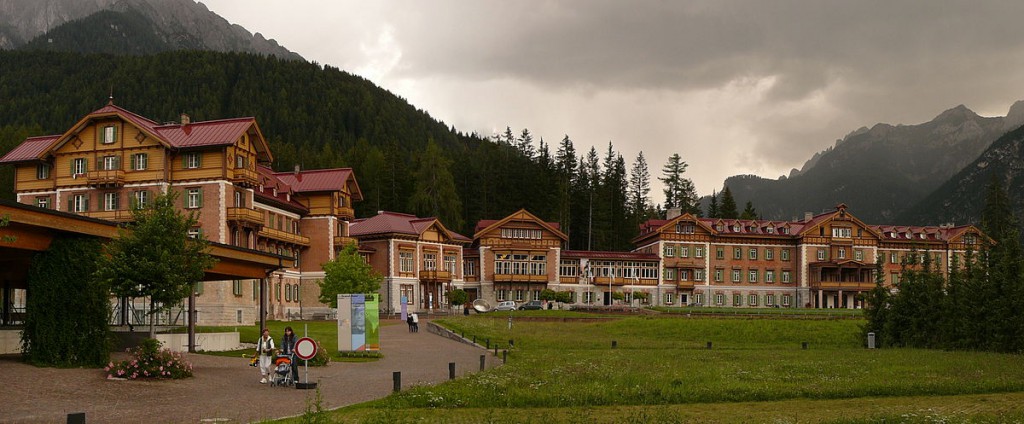
Theresia has a new residence: the town of Dobbiaco (Toblach) will host the orchestra for a six-days stage in August. It’s maybe one of the most perfect places in which stay to play music.

Do you know why? Dobbiaco was the favourite residency of Gustav Mahler, who spent here the summer from 1908 to 1910: it is here that he composed the Ninth and Tenth Symphonies (the latter one left unfinished), and the famous Song of the Earth (“Das Lied von der Erde”), the execution of which his author sadly never managed to listen.
It was the spring of 1908 when Gustav Mahler rented an apartment where he went to stay for three summers, and where in 1911 his widowed wife continued to live. It is a large and spacious residence, with ten rooms and a beautiful closed veranda. The house is one of the antique residences of Dobbiaco-Toblach which date back to the times of Emperor Maximilian and in the grand living room one sees on the ceiling the coat of arms of the Lords of Leis. “Dobbiaco is Extraordinary” Mahler used to say “it Tempers your Body and Soul”. Given Mahler’s deep connections with Dobbiaco, entering the room where the famous composer stayed with his wife Alma is today a very touching experience.


From the second half of the 19th century onwards, tourist development started in Dobbiaco, with the consequent construction of new homes and infrastructures, and also the tracing of a railway line connecting Vienna with South Tyrol.
On November 20, 1871, the railroad through the Pustertal Valley from Lienz to Franzensfeste went into service. In the first years after the opening of the railroad, the business expectations of the Hapsburg imperial Südbahngesellschaft were not fulfilled, and because of that the future market was based upon tourism. Consequently, the building of a hotel was taken into consideration as an innovative point of attraction on the basis of a location favorable to tourism and of the grandiose scenery in Toblach. Construction began on the so-called “Südbahnhotel” (“Southern Railway Hotel”, later the Grand Hotel) on August 25, 1877. The construction plans came from Wilhelm Ritter from Flattich, director of the railway’s own Department of Structural Engineering. Construction costs had to be strictly limited during a phase of economic recession; thus the architect had to fall back on his models for railway stations.

The hotel went into service with the summer season of 1878. With a capacity of 80 beds, it was in no way a Grand Hotel but rather a functional structure with few prestigious elements. The new leaseholders, Ignaz and Elise Überbacher, represented a special stroke of luck for the Südbahngesellschaft, since especially Elise knew how to deal with guests and staff well.
Prominent figures of the time also visited Toblach in those years, and this was naturally of great importance as it conveyed to the establishment that special aura of nobility. In autumn, 1887, the heir to the German throne, Prince Friedrich, came to Toblach. Further nobility followed later, such as King Albert of Saxony, the Austrian Crown Princess Archduchess Stephanie, and King Milan of Serbia, and consequently it soon became clear that the Hotel Toblach, as it was known, had transformed itself into the Grand Hotel.
Today the Grand Hotel Toblach is no more a hotel: the building hosts a Youth Hostel and the Cultural Centre, with the concert hall “Gustav Mahler”.

This is where Theresia Youth Baroque Orchestra will reharsal under the direction of Chiara Banchini and will perform on 21th August. Save the date and join us! You can buy tickets here.


